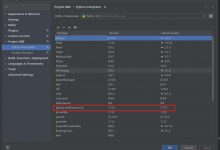链接 UVA750 【8 Queens Chess Problem】
题目描述:
In chess it is possible to place eight queens on the board so that no one queen can be taken by any
other. Write a program that will determine all such possible arrangements for eight queens given the
initial position of one of the queens.
Do not attempt to write a program which evaluates every possible 8 configuration of 8 queens placed
on the board. This would require 88
evaluations and would bring the system to its knees. There will
be a reasonable run time constraint placed on your program.
The first line of the input contains the number of datasets,
and it’s followed by a blank line.
Each dataset contains a pair of positive integers separated
by a single space. The numbers represent the square on which
one of the eight queens must be positioned. A valid square
will be represented; it will not be necessary to validate the
输入描述:
To standardize our notation, assume that the upper leftmost corner of the board is position (1,1). Rows run horizontally and the top row is row 1. Columns are vertical and
column 1 is the left-most column. Any reference to a square
is by row then column; thus square (4,6) means row 4, column
6.
Each dataset is separated by a blank line.
输出描述:
Output for each dataset will consist of a one-line-per-solution representation.
Each solution will be sequentially numbered 1 . . . N. Each solution will consist of 8 numbers. Each
of the 8 numbers will be the ROW coordinate for that solution. The column coordinate will be indicated
by the order in which the 8 numbers are printed. That is, the first number represents the ROW in
which the queen is positioned in column 1; the second number represents the ROW in which the queen
is positioned in column 2, and so on.
Notes:
The sample input below produces 4 solutions. The full 8×8 representation of each solution is shown
below.
Submit only the one-line, 8 digit representation of each solution as described earlier. Solution #1
below indicates that there is a queen at Row 1, Column 1; Row 5, Column 2; Row 8, Column 3; Row
6, Column 4; Row 3,Column 5; … Row 4, Column 8.
Include the two lines of column headings as shown below in the sample output and print the
solutions in lexicographical order.
输入样例:
11 1
输出样例:
SOLN COLUMN# 1 2 3 4 5 6 7 81 1 5 8 6 3 7 2 42 1 6 8 3 7 4 2 53 1 7 4 6 8 2 5 34 1 7 5 8 2 4 6 3
题意:
给你两值row,cal
在棋盘上放8个互相攻击不到的皇后
在第row列cal行一定要有一个皇后
数据范围:
询问次数不超过20,每格价值不超过100
思路:
8皇后问题的应用
用一个二维数组来存储每种情况皇后的摆放位置
P[i][j]表示方式 i 中第 j 行皇后的列位置
用递归来完成p数组
代码:
#include <cstdio>using namespace std;int P[1000][9]; //方式 i 中第 j 行皇后的列位置为 P[i][j]int tmp[9]; //当前方式中第 i 行皇后的列位置为 tmp[i]int n = 0; //方式数初始化bool col[8] = {0}, left[15] = {0}, right[15] = {0}; //所有列和左右对角线未被选中void fun(int r){if(r == 8){for(int i = 0;i < 8;i++)P[n][i] = tmp[i];n++;return;}for(int c = 0;c < 8;c++){int ld = c+r;int rd = (c-r)+7;if(!col[c]&&!left[ld]&&!right[rd]){col[c] = left[ld] = right[rd] = 1;tmp[r] = c;fun(r+1);col[c] = left[ld] = right[rd] = 0;}}}int main(){fun(0);int Case;scanf(\"%d\",&Case);while(Case--){int row,col;//确定皇后的行和列;scanf(\"%d %d\",&row,&col);printf(\"SOLN COLUMN\\n\");printf(\" # 1 2 3 4 5 6 7 8\\n\\n\");int k = 1;for(int i = 0;i < n;i++){if(P[i][col-1] == row-1){printf(\"%2d \",k++);for(int j = 0;j < 8;j++)printf(\" %d\",P[i][j]+1);printf(\"\\n\");}}if(Case) printf(\"\\n\"); //注意格式和low与col别搞反了}return 0;}
 爱站程序员基地
爱站程序员基地


